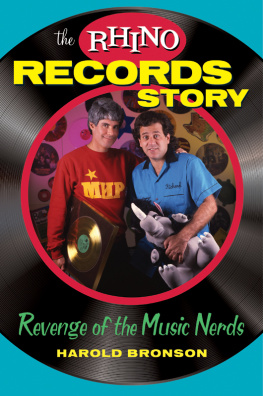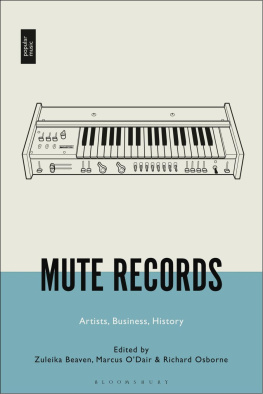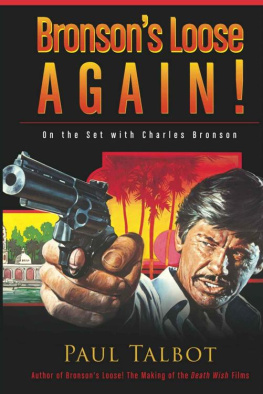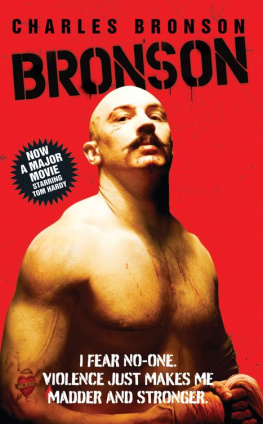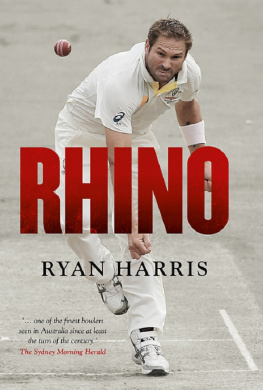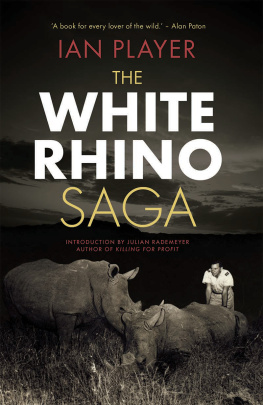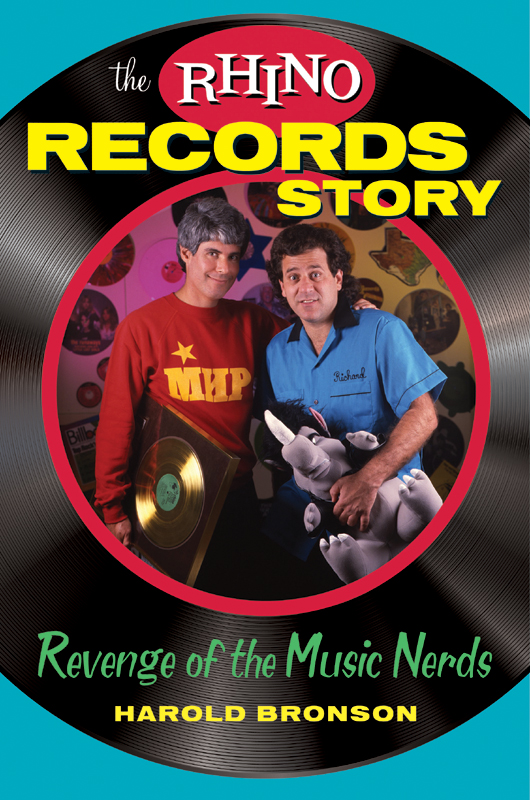

Copyright 2013 by Harold Bronson
All rights reserved. Published in the United States of America. No part of this book may be reproduced or transmitted in any form or by any means, graphic, electronic, or mechanical, including photocopying, recording, taping or by any information storage or retrieval system, without the permission in writing from the publisher.
Photos provided from the authors archive.
Materials for which Rhino Entertainment owns the copyright are used here with permission.
Photo of the Turtles in London courtesy of Not Fade Away.
Photo of the Ramones at Rhino is by Jenny Lens JRA LLC. All rights reserved.
www.JohnnyRamone.com
This edition published by SelectBooks, Inc.
For information address SelectBooks, Inc., New York, New York.
First Edition
ISBN 978-1-59079-128-8
Library of Congress Cataloging-in-Publication Data
Bronson, Harold.
The Rhino Records story: revenge of the music nerds / Harold Bronson. First edition.
pages cm
Includes index.
Summary: Co-founder of Rhino Records label, which he ran with his partner for twenty-four years, charts the course of the company started by two music fans in the back of their record store and has frequently won the award for label of the year. Author profiles many of the labels artists, including the Monkees, Turtles, and Tommy JamesProvided by publisher.
ISBN 978-1-59079-128-8 (hardbound book: alk. paper)
1. Rhino RecordsHistory. 2. Bronson, Harold. 3. Foos, Richard. 4. Sound recording executives and producersUnited States. 5. Sound recording industryUnited StatesHistory. I. Title. ML3792.R55B76 2013
384dc23
2013016154
Manufactured in the United States of America
10 9 8 7 6 5 4 3 2 1
The Intro
W hen Richard Foos and I kick-started the Rhino Records label from the back room of our record store, our ambition was limited to making enough money so that we wouldnt have to get real jobs. Ignoring the constraints of commercial radio, we dreamed of having hits by producing novelty records like the ones we grew up listening to in the 1950s and 1960s. A bit later, when we started to make available the great records of the past, we went against the standard business practice of allocating as little as possible on these reissues by spending more money on the product as a reflection of how important the music was to us. We didnt set out to create Americas best record company, or one that made tens of millions of dollars. Our success was the result of our passion, inherent business sense, and the commitment of our employees.
In my own mind, I envisioned myself as a Rod Stewart or Marc Bolan type of mod, but without the drive or clothing budget. One morning in the early days of the label Richard announced, Its clothes buying time! solely so he could persuade me to part with the out of fashion cardigan I had worn to work that day. Of course, he was right. I had worn it in high school. He gave me twenty-five dollars for it, and then deposited it in the wastebasket.
Richard was content to look like a hippie follower of the Grateful Dead, except that he wasnt a fan of their music. Blow away the fantasy dust and Richards take isnt that far off the mark: We were a couple of record nerds who had a little more business savvy and slightly more social skills than the average record nerd who lived with their parents until they were forty. And if they ever got married, it could have easily been with a mail-order bride.
Because we didnt have hits, we werent respected by the music industry or happening new artists, and no models or starlets flocked to our sides. For a number of years our main social activity was crashing other peoples parties. We did, however, get to know many of the performers whose music we loved. We showed them interest and respectcompared to their era in which artists were routinely ripped-off by their original labelsand in a number of instances, helped to revive their careers.
For someone like me, engaged in the entertainment business, it might come as a surprise that I was initially inspired to write my memoirs after reading Iacocca: An Autobiography in 1985. Lee Iacocca, the veteran automotive executive, broke new ground in the way he revealed his personal life and professional career. Most autobiographies by celebrities and businessmen are not written by them. Mostly they talk into an audio recorder or to a ghostwriter. A transcript is written to which the author adds and edits the copy. I thought that, having been a writer in my twenties, I could manage to be more literate in telling my story by writing it directly.
I had intended to pounce on a history of Rhino not long after I left the company at the end of 2001, except it took me much longer to finish the film I was producing than I had anticipated. The subsequent head of Rhino changed the name of the company to Warner Strategic Marketing and stopped promoting the brandalthough it was still used on the product. Primarily because of Rhinos decreased visibility, combined with the music industrys decline, I decided to put off the project.
But the more I thought about our storyhow much music fans loved our product, how we inspired other companies to care for their archives, of all the good we brought to our employees and the community, of all the wacky things we didthe more I thought it was one that needed to be told.
It was a dream job, except nobody had given it to us. We had to develop and define it. We did it on our own, with no funding from a deep-pocketed relative, and with no mentor to show us the way. Because we had no boss telling us what we couldnt do, the company was largely a reflection of who we were as people, the imagination as well as the humanity. We had a good relationship with each other, and realized the need to express ourselves. Neither of us had been to business school or had formal training in the record business but this lack of experience, more often than not, had us doing the right thing rather than what would have been expected of us in an ongoing business. The end result was a good product with a positive effect. Listening to music makes people feel good. It doesnt add calories like a sweet dessert, and it can help to take them off, when providing a soundtrack for exercise.
At the end of our tenure, our profits and sales were good. Viewed from within the decline the industry experienced they were exceptional. To some degree, we were still propelled by our mission: to make the great music of the past available. Our successors, presumably, were ruled by more dominant and conventional motivators: keeping their jobs, pleasing their boss, hitting their financial targets, bolstering the companys stock price. Those were not our concerns and we, as well as our customers and employees, were all the better for it.

The chapters are sequenced somewhat chronologically. Later entries will illuminate earlier ones, adding pieces to a puzzle with more revealed at the books end. Although what follows are my impressions, opinions, and recollections, there is a desire on my part to present an accurate account of what transpired in the world of Rhino.
I would have preferred Record Label of the Year, but the National Association of Record Merchandisers (NARM) awarded Rhino the Entertainment Software Supplier of the Year award for 2001. Its wordy but it meant that we were chosen over all the major record companies and the software manufacturers whose products also made their way into record stores.
Next page
